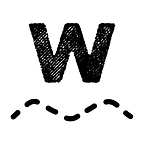A Journey From the Stanford d.school to School Districts Nationwide: Wayfinder Celebrates Our Fifth Birthday
Five years ago this week, Project Wayfinder launched its first prototype of our signature Purpose curriculum.
Since our initial experimental lessons, we’ve come far. Our curricula have reached nearly 50,000 students in 35 countries and 30 states.
In honor of our fifth anniversary, I’m excited to share our highlights, lowlights, and wisdom we’ve gained. This is the story of where we’ve been and where we’re headed.
HOW IT STARTED
Most social entrepreneurs create things they felt were missing from their own lives. This was certainly the case for me. In high school, I longed to discuss the deeper questions that weren’t addressed in class:
What does a meaningful life look like?
Where do I start if I want to create a purposeful life?
Who is a living role model for me?
The natural place to do this kind of work was in advisory classrooms. As a high school educator working in Oakland, CA I looked around for a SEL curriculum that would answer these questions. I never found one. So, I decided that’s what I wanted to do — solve the “advisory problem.”
In the Fall of 2015, I was fortunate to start the fellowship at the Stanford d.School’s Stanford K12 Innovation Lab.The fellowship takes folks with an inkling of an idea and, using the design thinking process, coaches them to develop it. I was paired with a full time product designer — someone who could translate ideas into a plan or product.
In early 2016, we developed our first prototype activities. By the summer of 2017, we had created our first year long curriculum. Over the 2017–2018 school year, it was offered at 25 schools to 2500 students.
It wasn’t long before we realized we needed to make a curriculum for younger students that would give them the foundation they needed to engage with our Purpose curriculum. So, we set off on an adventure: to develop something entirely new for 7th-9th graders.
NEXT STEPS
For our new curriculum, we used the design thinking process again. This methodology was key. Rather than waving a magic wand and deciding for kids and teachers what they needed, we asked them, in hundreds of interviews with teachers, parents, and students.
Belonging emerged as an antidote to the challenges during this period of adolescent development. It’s also a well-documented theme in the research on early adolescents.
ADAPTING TO COVID
When we started developing our Belonging curriculum in Summer 2018, we couldn’t have anticipated the series of world events that would make this topic urgent and all too relevant — COVID, racial justice uprisings, a tumultuous 2020 election.
We were able to get an entirely digital version up and running by August 2020 and out to 10,000 students at over 50 schools. It has proven incredibly useful for teachers as they navigate this bizarre academic year. As our teachers from New Jersey wrote,
“In a year in which we were, quite literally dreading the prospect that our 9th graders might never form meaningful connections to each other, to us, and to the larger community, the Belonging Curriculum was a lifesaver — a platform that we easily adapted to our needs and fostered some of the most rewarding conversations we’ve ever had with our incoming students. Who knows what next year will bring but we do feel confident that our students feel prepared to be active members of our/their community.”
WHERE WE’RE HEADED
A lot has changed since we set out to make an advisory curriculum that helped high schoolers develop purpose.
Today, we aim to make SEL 2.0 curricula with four transformational goals:
#1: More exciting for students
#2: More culturally relevant
#3: Offers opportunities for real world application
#4: Addresses anti-racism and diversity, belonging, and equity head on
By next fall, we’ll offer six full years of curriculum: three years of Belonging (7th-9th) and three years of Purpose (10th-12th) that can be taught digitally or in person.
We think of our curricula like movie trilogies: each should be able to stand on its own, but they’re more powerful and engaging if you experience them in sequence.
We’re refining our Purpose curriculum. There are three big updates in our next version:
- Lesson plan options for 30 and 50 minutes
- Three years of content per curriculum
- Both in-person and virtual learning lesson guides
When we set out on this journey, I couldn’t have imagined that five years later, we’d be serving tens of thousands of students on every continent with six full years of curriculum. It is through the hard work of our partners, teachers, and students that have made all of this work possible.
Our team at Wayfinder looks forward to building the next five years of student transformation together.
